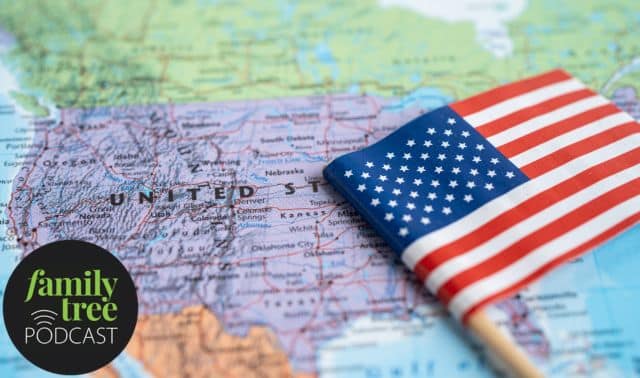JARFUL OF MEMORIES Some family heirlooms are very old, others newer but still holding the cherished memories of our generation growing up. One thing that I always remember is a large glass jar that sat high on a shelf in a family friend’s store. It was an old-fashioned store with a gas pump out front, a selection of groceries, a pop cooler and the best selection of penny candy I had ever seen. It was a spot for many of the seniors to congregate and gossip, or “discuss the happenings” as they called it.
A few decades ago, when I was a child, my grandfather would walk me down to the store and give me a quarter — a lot of money in those days for a child of three or four — to spend on anything I wanted. I would lean up against the counter while my grandfather talked to everyone in the store. The counter was old and scarred with the bumps and scrapes of many years. Behind the counter, up against the wall, I would peer. Some days I made my purchases quickly; other days I would linger in a personal debate that seemed so important.
I would count and figure, recount, recalculate and finally ask for the candy I wanted. By the time the quarter was spent, the little brown paper bag was almost full. I would hand over my quarter, and the owner of the shop would pause, shake the bag a little bit to settle all the penny candy, and say, “Oh my. It looks like there is a little room still here. Why don’t I put in a couple of peppermints for you and your grandpa? Would you like that?” as he reached up high to a glass jar full of peppermints. As I grew up, the taste of the penny candy faded into childhood memories, but the peppermints always brought back pleasant memories. Now I have a candy jar of my own, although it sits on my office desk, not high up on a store shelf. The kids that reach into the jar are considerably older than I was, but every time the jar is a opened it takes me back to fond memories and pleasant days.
JUDITH HAWLEY
Toronto
Feudin’, Fussin’ Just a Memory
The Hatfields and McCoys plan a family reunion. NO bushwhacking allowed. | By David Wecker
Bo McCoy is planning a big old family reunion this summer in Pikeville, Ky. He’s calling it M2K, short for “McCoys 2000.” Bo’s expecting a thousand or more members of his extended family to show up, and probably as many Hatfields, too.
Bo’s especially looking forward to having a big old Softball tournament, with the McCoys on one side, the Hatfields on the other. No, no, Bo says — it’s not what you think. The tournament’s all in fun, he says. There’s nothing left to fight about, he says. The feud has been over for a long time.
“Twelve people died in 12 years during the feud,” he says. “The death toll wore the fight out of everyone.”
I believe him. Granted, the bloodiest feud in America’s history was never really resolved — it just sort of fizzled out. But it’s been nearly 110 years since a Hatfield or a McCoy drew a bead on one another. It would be hard to imagine them taking up softball bats against each other now.
On the other hand, I can see where some — McCoys, especially — might believe there’s still a score to settle. There are almost as many stories about the feud as there are descendants of the two families, but most of them agree that the McCoys took the worst of it, by far. According to Bo, these were some of the key circumstances surrounding the most famous family dispute in American history:
The Hatfields lived on the West Virginia side of the Tug Fork Valley, and the McCoys lived on the Pikeville side. Shortly after the Civil War, William Anderson “Devil Anse” Hatfield bushwhacked and killed Asa Harmon McCoy for having served in the Union Army. That didn’t bother the rest of the McCoys much, since they tended to be Confederate sympathizers anyway.
Still, the McCoys resented the Hatfields because the Hatfields had made a killing in the timber business, whereas the McCoys had all but lost their shirts. Worse, the Hatfields bragged about how rich they were.
Resentment turned to bad blood in the fall of 1878, when Randolph McCoy — that’s Bo’s great-great-great-grandfather — accused Floyd Hatfield of stealing a hog. The former filed charges, and the judge put together a jury of six Hatfields and six McCoys.
“The Hatfields voted ‘not guilty,’ and one McCoy voted with him,” Bo says. “To this day, that McCoy is considered to he a family traitor.”
The bad blood began to bubble and boil a few years later when Randolph’s eldest daughter, Roseanna, became pregnant by way of Devil Anse’s son, Johnse, who turned out not to be the marrying kind.
“Roseanna was a beautiful woman, as far as mountain women went,” Bo says. “Johnse was a mountain playboy. And Johnse’s wandering eye didn’t stop with Roseanna.”
On election day of 1882, three of Roseanna’s brothers cornered an elderly Hatfield named Ellison and stuck him with a knife. A posse took the McCoy boys into custody, but a bunch led by Devil Anse grabbed them away from the posse. Devil Anse held them for three days, at which time Ellison Hatfield died of his wounds and the three McCoys were tied to a tree and shot deader than dirt.
“For five years, things were quiet,” Bo says. “No newspaper reported on the feud, and most folks fervently wanted to forget it.”
Most, but not all. On New Year’s Day 1888, Ronald Mounts and two of his Hatfield kin staged an attack on Randolph McCoy’s cabin on the Blackberry Fork. Randolph’s daughter, Alifair, heard strange noises in the woods outside; when she opened the door, she was dropped by a bullet through her heart.
Randolph snatched up his rifle and took off through the woods, Bo says, hoping the attackers would follow him. Instead, they shot Alifair’s brother, Calvin, and burned down the cabin. Ronald Mounts also died on that occasion, due to a sudden loss of blood.
Devil Anse Hatfield moved out of the valley. He never was arrested and never lost any of his offspring to the feuding. Years later, Bo says, Devil Anse became a “born-again Christian” and died a contented man.
The McCoy patriarch was less fortunate. “Randolph became a broken, sullen man,” Bo says. “He’d lost five children. And with them he lost his vivation.”
Which is why, if I were a Hatfield, I might be slow to accept an invitation from a McCoy to a location where there were baseball bats.
Reprinted from the Cincinnati Post. DAVID WECKER is a Cincinnati newspaper columnist.
Grave News
I needed to visit a cemetery in my hometown of Spokane, Wash., to photograph a tombstone. My then-eight-year-old grandson, Justin, was visiting from his home in Pullman, Wash., some 80 miles south. So I took him along. I didn’t think he’d ever been to a cemetery before, and so I was explaining what a cemetery was and how and why dead folks were buried there. His only comment, spoken in utter disbelief, was: “This happens in Pullman, too?”
DONNA POTTER PHILLIPS
Spokane, Wash.
 Have You Seen Me?
Have You Seen Me?
Orphaned family photos, find an unlikely home at The People’s Photo site. | By Jim Faber
While infamy might make interesting family history, the sublimely ridiculous is usually better off hidden. This being the case, one of the last places you would want to find a long-lost relative is among The People’s Photo collection of orphaned photographs.
The People’s Photo site <www.spillway.com/found> is a collection of photographs that have been found by the site’s creators, Sam Henderson and John Culhane, or by visitors to the Web site. Photos have been found on the street, in dumpsters or left over from previous owners of places.
The photos range from the pathetic (a Polaroid photo of a woman with her cheeks puffed out, captioned, “She’s hiding something in her mouff!”) to the frightening (a small child sitting on the lap of a demonic-looking Easter bunny) to the ridiculous (a baby covered in cake and holding a kitchen knife). And those are the photos that make the site.
“We once got an e-mailed photo from some guy who found an obscene picture of a woman in the coils of his refrigerator. It’s important to look in those places, I guess,” says John Culhane, one of the site’s creators. “If it’s not compelling or curious, it doesn’t go up. The best photos ask questions of the viewers and create a dialogue.”
Even though most of these photos are worth a thousand words (not all of them flattering), visitors are encouraged to submit comments, thoughts or interpretations of any of the pictures on the site.
“We get 10-20 comments a day. We try to post the ones that have the most to say about the photo itself or the details within the photo,” Culhane says. “Some people have started to invent their own mythology and characters, or they create imaginary dialogues.”
The year-old site continues to grow as the founders receive five or six interesting pictures a month. But getting interesting pictures seems to be no accident and the site founders may not be alone in their hobby.


 Have You Seen Me?
Have You Seen Me?


